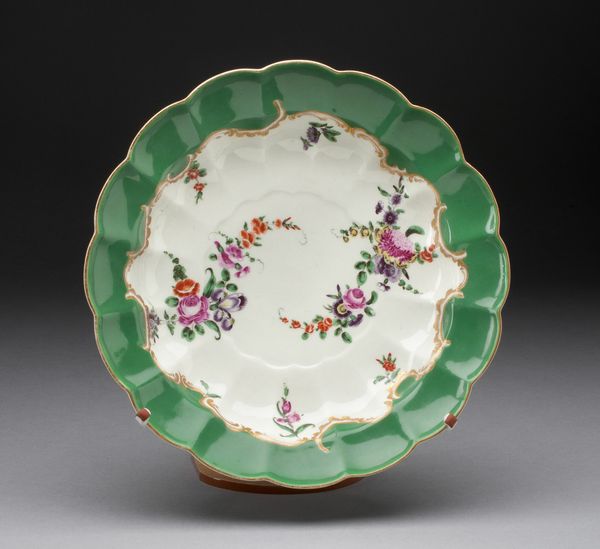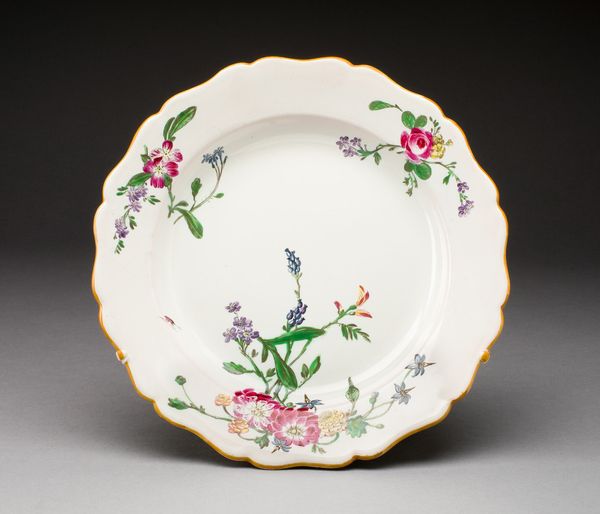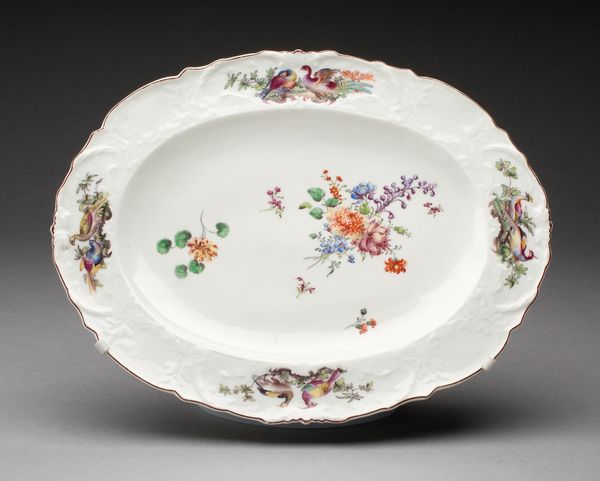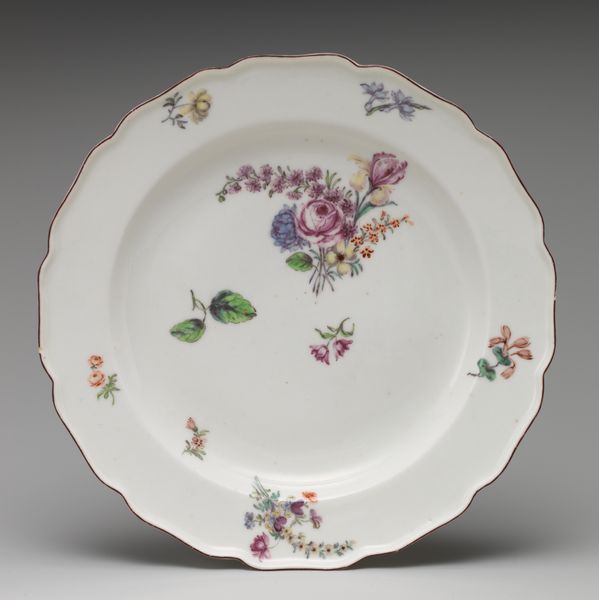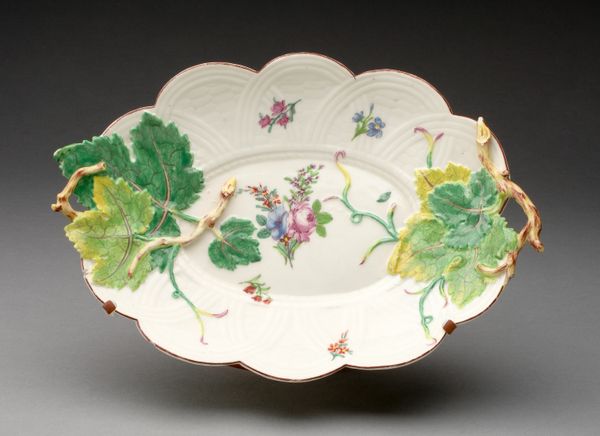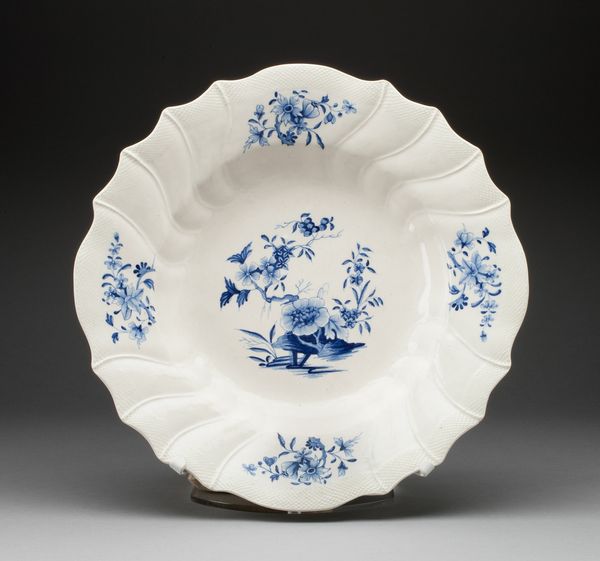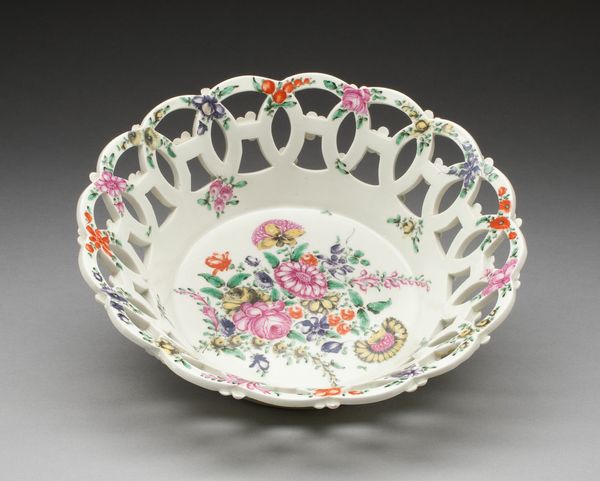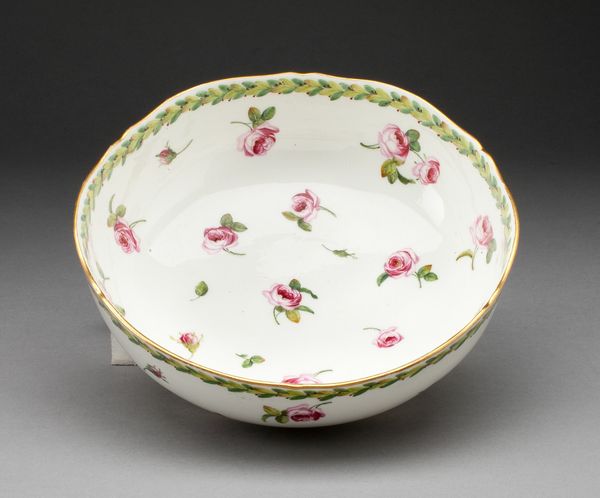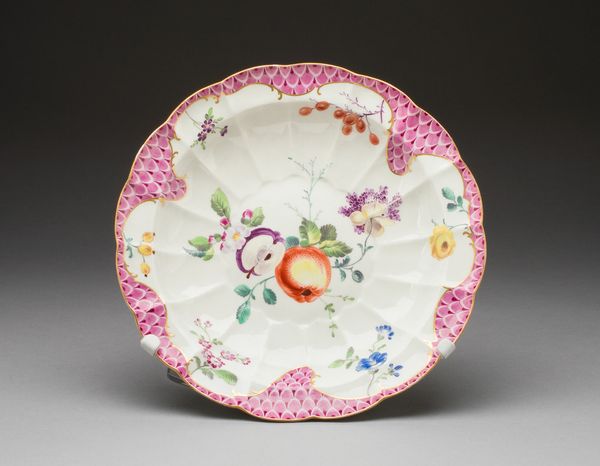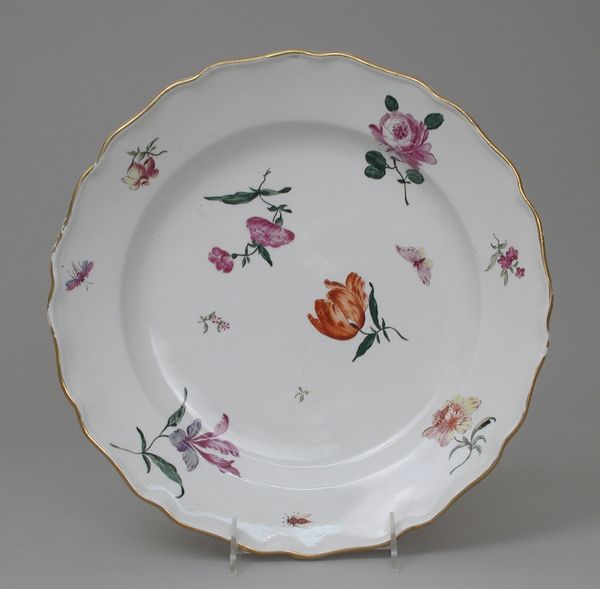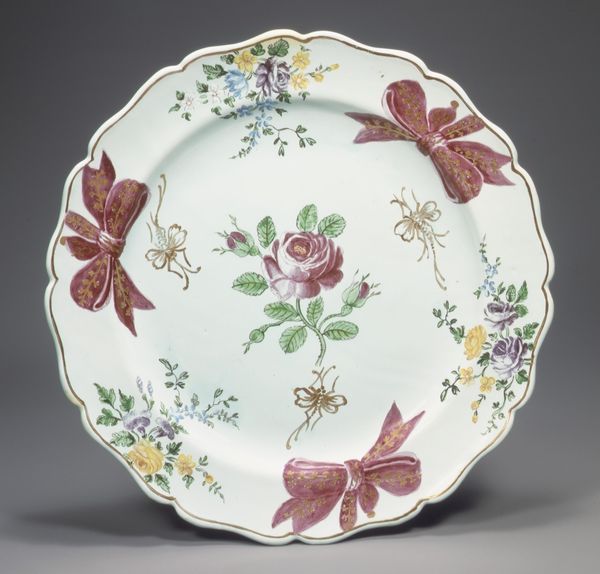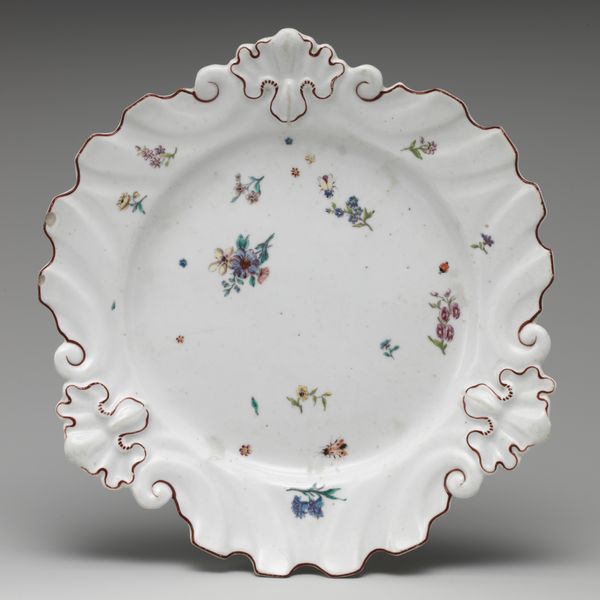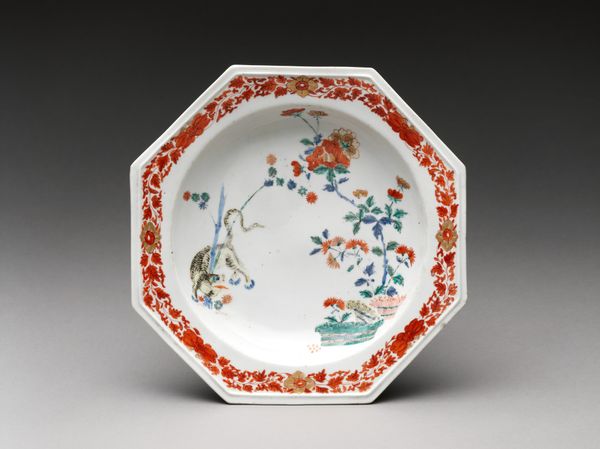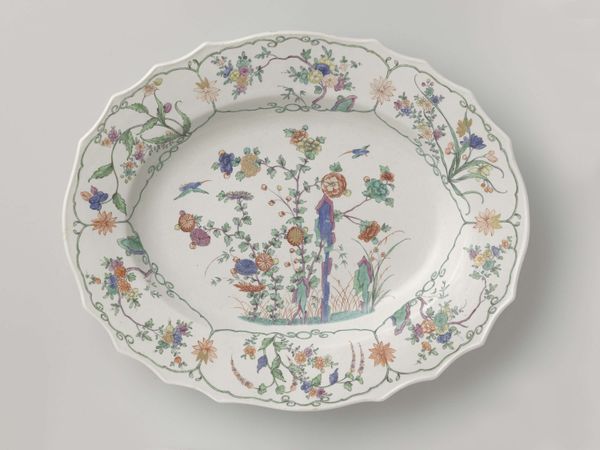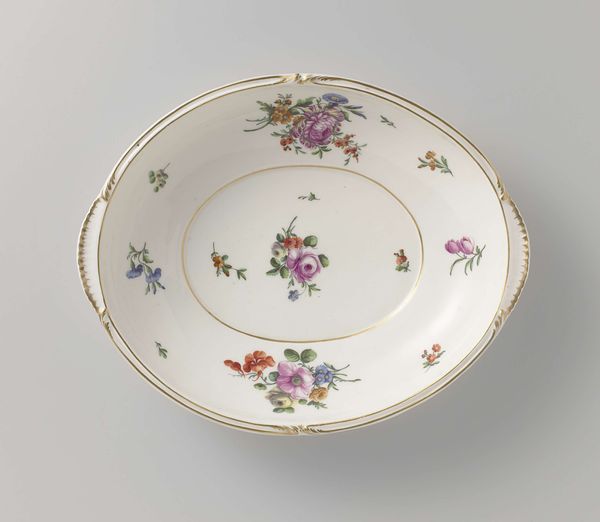
ceramic, porcelain
#
neoclassicism
#
ceramic
#
porcelain
#
ceramic
#
decorative-art
Dimensions: 7 1/2 x 7 1/2 in. (19.05 x 19.05 cm)
Copyright: Public Domain
Editor: Here we have a "Side plate" made around 1800 by Wedgwood. It is made of ceramic and porcelain. I am drawn to the elegance of these objects and I wonder, what are we to make of the botanical decorations in terms of their social context? Curator: This side plate, seemingly a simple piece of Neoclassical porcelain, actually provides a fascinating glimpse into the intertwined histories of colonialism, trade, and artistic production. Think about where Wedgwood sourced its materials: clay and labor extracted from colonized lands and populations were very likely involved. Editor: Oh, I never thought of it that way! So the seemingly innocuous botanical details might carry deeper meanings? Curator: Exactly! Consider the exoticism associated with botanical collecting at the time. Botanical studies and designs celebrated nature but often reinforced colonial power structures, representing appropriation and control of resources, right? It makes one wonder, are we truly admiring an aesthetic object, or complicit in a silent endorsement of colonial structures? Editor: That's unsettling. It changes how I view the seemingly benign decoration. Were the consumers aware of this connection? Curator: Possibly. But that's exactly the complexity, isn’t it? That disconnect is crucial. Many consumers reveled in the luxury and refinement without fully grasping the underlying exploitation. In what ways are modern consumers, even ourselves, equally blind to the historical origins of present day "innocent" everyday items? Editor: This makes me question my assumptions. The plate is no longer a beautiful relic but a point of critical inquiry. Curator: Absolutely! By recognizing these hidden dimensions, we are equipped to interpret our world in new ways. Editor: Thank you; I feel much better equipped to analyze objects through intersectional frames now.
Comments
No comments
Be the first to comment and join the conversation on the ultimate creative platform.
